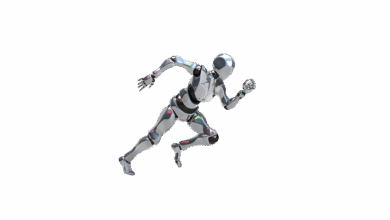The Shifting Sands of Infrastructure

Remember when the internet felt like a wild, open frontier? A place where every new tool or platform felt genuinely distinct, offering a fresh perspective or solving a problem in a novel way. For many of us in tech, that era feels like a distant memory. Today, there’s a growing unease, a quiet hum of sameness that seems to be permeating every corner of the digital world. We’re not just seeing stagnation; we’re witnessing a unique form of convergence, a kind of digital “collapse” where difference is slowly but surely dying.
The Shifting Sands of Infrastructure
There was a golden age, not too long ago, where the lines were clear. Big companies built the robust foundations – the servers, databases, APIs, and hosting. The heavy lifting, the ‘plumbing,’ if you will. And we, the developers, we built on top of it. Our role was creativity, innovation, crafting the products and experiences that users actually touched. GitHub was for code, AWS for infrastructure, Google Cloud for scale. It was a clear, predictable, and frankly, a healthier ecosystem. That invisible handshake between the giants and us, the builders, was the bedrock of a vibrant web.
Then, AI burst onto the scene. Initially, it felt like a renaissance. OpenAI’s API, for instance, offered a new canvas. Chatbots, assistants, writing tools – developers rushed to build. It echoed the early days of cloud services, that exhilarating sense of “finally, we can build anything.” Innovation was raw, fast, and seemingly endless.
But beneath the surface, something shifted. What we thought was infrastructure wasn’t just infrastructure anymore. OpenAI, like others, started observing what was being built on their platform. The best ideas, the most successful features, began to be quietly absorbed into their own products. Before ChatGPT had its “code interpreter,” there were dozens of startups doing that exact thing. Before GPTs, hundreds of mini-tools powered by GPT itself. It’s a clever, if unsettling, strategy. Give access, watch, learn, then integrate.
From Builders to Built-Upon
This isn’t “stealing”; it’s often framed as “evolution.” But for founders and developers who poured their lives into an idea built on these ecosystems, that evolution can feel a lot like extinction. If your product succeeds, it’s not just users who notice; Big Tech notices. They own the infrastructure, the models, the data. And with that unparalleled access and scale, they can rebuild your product faster, better, and more efficiently. This isn’t just OpenAI’s game; Google, AWS, and even smaller cloud providers are all following suit. The era of pure infrastructure is quietly giving way to an “absorption era.”
Big Tech’s New Playbook: Giants Moving Like Startups
What many don’t fully grasp is that Big Tech isn’t just absorbing; they’re refactoring themselves from the inside out. Speed, once the exclusive domain of nimble startups, is now their mantra. We used to count on their slow decision-making, their layers of management, their endless approval cycles. That gap is rapidly closing. These companies are flattening hierarchies, decentralizing decision-making, and empowering product teams to move with startling agility.
It’s an organizational revolution. They know they’re not just competing with each other, but with every solo developer, indie hacker, and small startup out there. They’ve adopted a startup mindset internally, where good ideas, if aligned with broader goals, get near-immediate approval. And let’s not forget, they still wield massive engineering teams, near-limitless compute power, and internal AI models far more advanced than anything publicly available. Combine that with startup-level agility, and you get something formidable: a machine that can outbuild, absorb, and outpace everyone.
The Blurring Lines of Platforms
This convergence isn’t limited to AI. Look around. The distinct edges of online platforms are blurring into a uniform landscape. YouTube has social posts, Twitter has videos, Instagram has Reels, Facebook has stories. X (formerly Twitter) is becoming a multi-faceted beast with live video and soon, a full chat interface. WhatsApp, conversely, is embracing e-commerce, morphing into something akin to Shopify.
In the creative and development space, the lines are equally indistinct. Figma, once purely a design tool, now generates code with AI plugins. Webflow, built for designers who couldn’t code, finds its unique value proposition eroded as design tools take on development capabilities. Canva generates websites, Notion creates entire workflows, Framer builds landing pages. Every new update, every integration, seems to fold in features that once defined a separate tool. In this relentless race to be everything, difference disappears. We’re left not with choice, but a kind of digital confusion.
The Paradox of Choice and the Death of Difference
In the web development world, choice was once a superpower. Now, it often feels like paralysis. How many UI libraries, design systems, or frameworks have we seen that promise a “better UI” or “faster startup,” only to deliver something barely distinguishable from a dozen others? We’ve optimized ourselves into sameness, chasing marginal improvements until true differentiation becomes almost impossible to spot.
Users are overwhelmed by the sheer volume of tools, while developers struggle to create anything truly unique. Because anything novel, anything that gains traction, can quickly be integrated as a feature into a larger product. And the speed at which this happens is unprecedented. You can spend weeks building something remarkable, only to find a major platform has already shipped a similar feature by the time you’re ready to launch. This silent, rapid obsolescence is a cost few talk about.
The Developer’s Crossroads: Innovation vs. Imitation
So, where does this leave the modern developer? At a crossroads, certainly. Between genuine creativity and the threat of collapse; between true innovation and rapid imitation. We can build faster than ever, yes, but we can also be replaced faster. We can create something groundbreaking, but if it catches on, a bigger player is poised to clone it overnight. AI has leveled a playing field, but it has profoundly reshaped who owns that field. And that, for many of us, is the deepest fear. We’ve built this new world on foundations that aren’t truly ours, and the owners are now playing our game.
If you ask me what developers should focus on, honestly, I don’t know. And anyone who claims to have a definitive answer might be selling you something. I see the same shifts, the same uncertainties. The idea that “developers who use AI will take your job” quickly flipped to “don’t give up, these AI models will fail.” Both, in my view, miss the point. This technology is a toddler learning to run, and it learns with every stumble, without forgetting its mistakes. Waiting for it to ‘fall’ so you can be useful again feels like a desperate, and likely futile, strategy.
The old advice about “building solutions for real problems” rings hollow when the problem itself is a moving target, constantly changing shape as new AI capabilities emerge. YouTubers package confusion as guidance, pushing courses while operating in teams, making solo efforts appear deceptively simple. The truth is, many are learning to code for survival, for money, not just for the joy of it. And when those giving advice are often more focused on video editing than coding, the disconnect grows.
Building in public, once a beacon for indie developers, now feels like an open invitation for “idea theft” – which, in this new age, looks like automation. If you hide your idea, you lose visibility and the chance to connect with users. If you share it, you risk seeing it absorbed by Big Tech. It’s a no-win scenario for the un-funded.
So, my only advice, if it can even be called that, is this: Don’t think long-term in the purely digital realm. Don’t get too attached to your current digital plan. If you start making real money, move it offline. Translate it into something physical, something that exists beyond screens and models. Because what’s coming, with robots that can already perform complex tasks, isn’t waiting for us to adapt. It’s a trajectory already in motion. Find a small, temporary niche that AI won’t immediately disrupt, make your money, save it, and build something tangible, something outside this increasingly precarious digital loop.
Perhaps I’m wrong. Perhaps this perspective is too grim, too close to the forest to see the trees. I know there are still incredible developers out there building real products, securing jobs, and finding success. The web isn’t dying; it’s just losing its distinct edges, folding in on itself. Innovation hasn’t ceased, but difference, true uniqueness, is becoming a rare commodity.
Like many, I’m still in the thick of it, building and hoping for the “rain” in this digital drought. It’s the inherent contradiction of our time: knowing how fragile everything feels, yet showing up anyway, driven by a need to create, to contribute. The future isn’t clear, but understanding the forces at play – the absorption, the blurring, the sameness – is the first step, however unsettling, towards navigating it.





